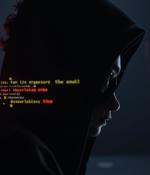Security News

Swiss cybersecurity firm Prodaft has launched a new initiative called 'Sell your Source' where the company purchases verified and aged accounts on hacking forums to to spy on cybercriminals. [...]

EncryptHub, a notorious threat actor linked to breaches at 618 organizations, is believed to have reported two Windows zero-day vulnerabilities to Microsoft, revealing a conflicted figure...

In 56% of Sophos managed detection and response (MDR) and incident response (IR) cases, attackers gained initial access to networks by exploiting external remote services, including edge devices...

Malicious actors are exploiting Cascading Style Sheets (CSS), which are used to style and format the layout of web pages, to bypass spam filters and track users' actions. That's according to new...

Microsoft on Thursday unmasked four of the individuals that it said were behind an Azure Abuse Enterprise scheme that involves leveraging unauthorized access to generative artificial intelligence...

Microsoft has named multiple threat actors part of a cybercrime gang accused of developing malicious tools capable of bypassing generative AI guardrails to generate celebrity deepfakes and other...

The threat actors behind the Darcula phishing-as-a-service (PhaaS) platform appear to be readying a new version that allows prospective customers and cyber crooks to clone any brand's legitimate...

A malware campaign distributing the XLoader malware has been observed using the DLL side-loading technique by making use of a legitimate application associated with the Eclipse Foundation. "The...

A new report from Gen highlights a sharp rise in online threats, capping off a record-breaking 2024. Between October and December alone, 2.55 billion cyber threats were blocked – an astonishing...

Cybersecurity researchers have flagged a credit card stealing malware campaign that has been observed targeting e-commerce sites running Magento by disguising the malicious content within image...